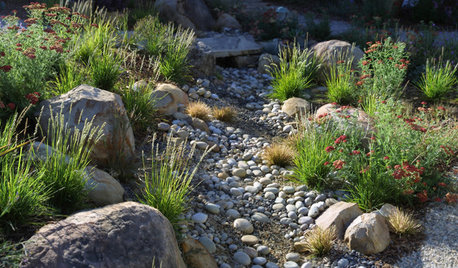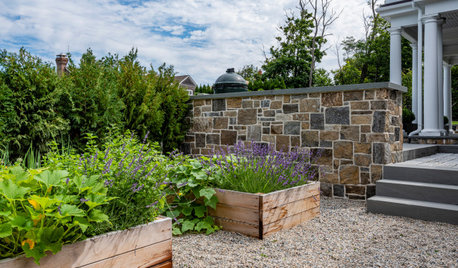Watering issues
lenle
11 years ago
Related Stories

GREEN BUILDINGJust Add Water: Rain Barrel Magic
Take your rainwater storage from practical to beautiful with a new breed of design-friendly rain barrels
Full Story
LANDSCAPE DESIGNHow to Design Your Landscape to Spread Water
Water that’s distributed widely will more readily soak into the ground
Full Story
LIFEThe Top 5 Ways to Save Water at Home
Get on the fast track to preserving a valuable resource and saving money too with these smart, effective strategies
Full Story
BATHROOM DESIGNDreaming of a Spa Tub at Home? Read This Pro Advice First
Before you float away on visions of jets and bubbles and the steamiest water around, consider these very real spa tub issues
Full Story
LANDSCAPE DESIGNHow to Move Water Through Your Landscape
Swales, underground pipes or a mix of both: There’s more than one way to distribute water in the garden
Full Story
SAVING WATER11 Ways to Save Water at Home
Whether you live in a drought-stricken area or just want to help preserve a precious resource, here are things you can do to use less water
Full Story
LANDSCAPE DESIGNHow to Design Your Landscape to Slow Down Water
Putting the brakes on stormwater runoff is the first step in sustainable water design
Full Story
SAVING WATERXeriscape Gardens: How to Get a Beautiful Landscape With Less Water
Conserve water and make gardening much easier with the xeriscape approach’s 7 principles
Full Story
GARDENING GUIDES9 Ways to Be Water-Wise in the Edible Garden
Consider these tips to get a healthy backyard crop that uses less water
Full Story
BATHROOM DESIGNGreen and Clean: Sleek Water-Wise Bathroom Fixtures
By choosing ecofriendly faucets, showerheads and even toilets, you can save loads of water and money without sacrificing style
Full Story






mrlike2u
tapla (mid-Michigan, USDA z5b-6a)
Related Professionals
Middle River Landscape Architects & Landscape Designers · Amesbury Landscape Contractors · Bedford Heights Landscape Contractors · Caldwell Landscape Contractors · Dallas Landscape Contractors · Mason Landscape Contractors · Natick Landscape Contractors · New Cassel Landscape Contractors · North Plainfield Landscape Contractors · Ocoee Landscape Contractors · Olympia Landscape Contractors · Suitland Landscape Contractors · Shafter Landscape Contractors · Bensenville Landscape Contractors · Crestview Interior Designers & DecoratorslenleOriginal Author
tapla (mid-Michigan, USDA z5b-6a)
lenleOriginal Author
mrlike2u
tapla (mid-Michigan, USDA z5b-6a)
lenleOriginal Author
tapla (mid-Michigan, USDA z5b-6a)
lenleOriginal Author
tapla (mid-Michigan, USDA z5b-6a)